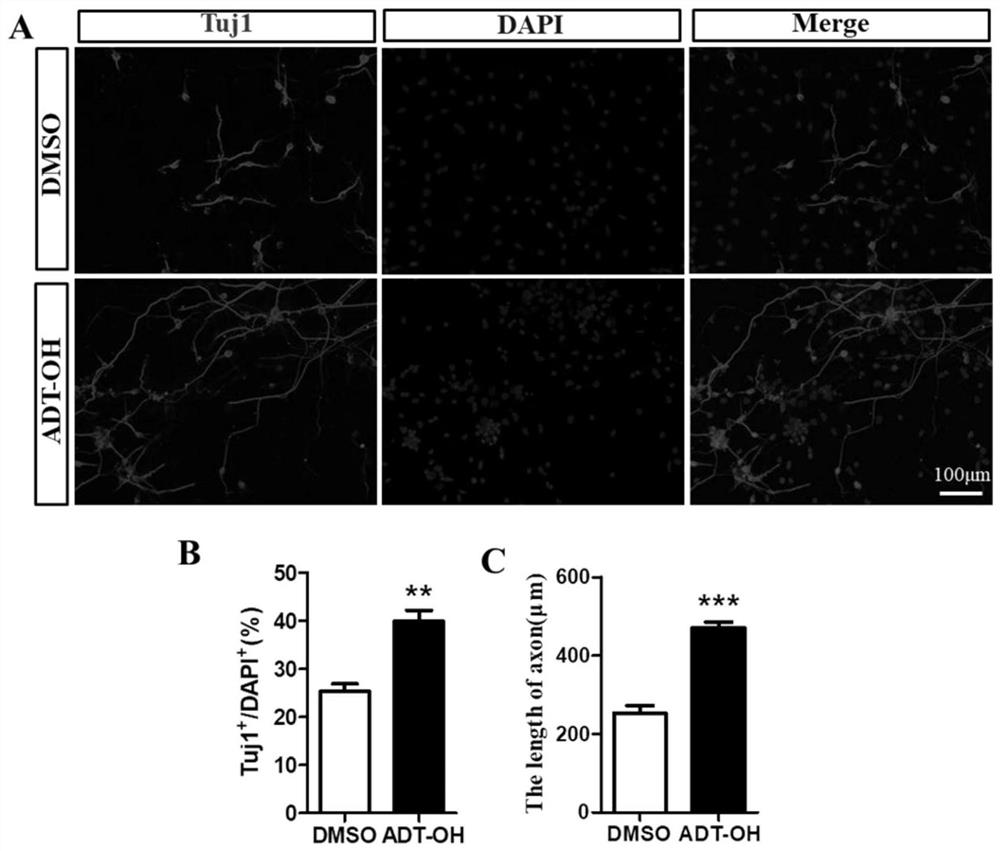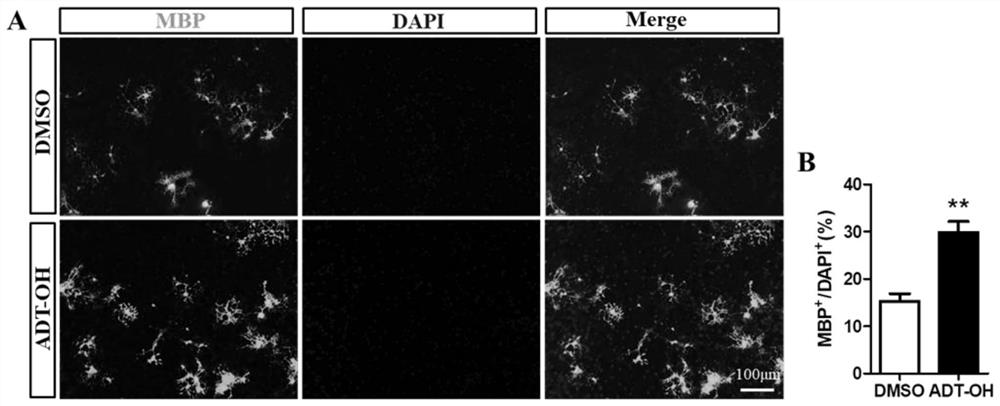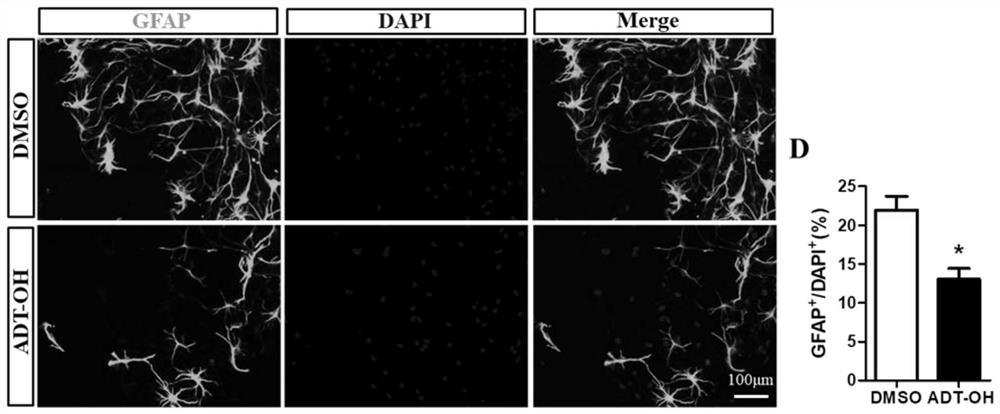Application of hydrogen sulfide slow-release organic donor ADT-OH in preparation of medicine for treating nervous system diseases
A technology for neurological diseases and therapeutic drugs, applied in the field of biological cytology and regenerative medicine, can solve the problem of unclear potential effects of neural precursor cell differentiation, and achieve the effect of reducing the number of deaths
- Summary
- Abstract
- Description
- Claims
- Application Information
AI Technical Summary
Problems solved by technology
Method used
Image
Examples
Embodiment 1
[0031] (1) Male and female adult ICR mice were randomly mated at a ratio of 2:1. Every night at 8 o'clock, male and female mice were caged together. On the second day, if the female mouse had a vaginal plug at 8 o'clock in the morning, it indicated that the mating was successful, and this day was recorded as the first day of the mouse's pregnancy. When the mouse is 14.5 days pregnant (E14.5), it can be used for the extraction of neural precursor cells.
[0032]C57BL / 6J mice pregnant for 14.5 days were anesthetized by intraperitoneal injection of 4% chloral hydrate, the abdominal cavity of the pregnant mice was opened with sterile surgical scissors and surgical forceps, the uterus of the pregnant mice was dug open, and the brains of the fetal mice were taken out. Separate the fetal mouse brain tissue in the subventricular zone, digest the tissue with 0.05% trypsin in a 37°C water bath for 10 minutes, and then use the neural precursor cell culture medium (DMEM-F12 medium 39.2ml...
Embodiment 2
[0042] After the primary isolated neural precursor cells were cultured for 3-4 days, the neurospheres were blown into single cells and seeded in a 24-well cell culture plate covered with adhesive slides. The cells were added with ADT-OH (80 μmol / L ) and the control solute DMSO in the neural precursor cell culture medium for 3 days, then stained with the apoptosis-specific antibody caspase3, collected pictures under a fluorescent microscope, and counted the ratio of caspase3 positive cells to all DAPI positive cells. The statistical results showed that, and DMSO Compared with the control group, the ADT-OH group had fewer cells undergoing apoptosis ( Figure 4 A and B), the above data show that ADT-OH can protect neural precursor cells from apoptosis.
[0043] In summary, compared with the DMSO control group, the neuron differentiation rate in the ADT-OH group increased by 57.69%, the oligodendrocyte differentiation rate increased by 87.5%, and the astrocyte differentiation rate...
Embodiment 3
[0045] A mouse model of spinal cord injury was established by dropping a heavy object onto the dorsal side of the spinal cord of the mouse. The specific operations were as follows: the mouse was anesthetized, the back was cut in the middle, the lamina was removed, and the spinal dura mater was exposed; the heavy object was dropped from a certain height Fall freely and hit the spinal cord, causing spinal cord injury. Afterwards, the neural precursor cells treated with ADT-OH drugs were transplanted into the spinal cord injury site under a stereomicroscope, and the differentiation, cell survival and axon growth of the neural precursor cells in the injured site were detected one month later to evaluate the spinal cord repair. Effect.
[0046] The results showed that one month after the implantation of neural precursor cells treated with ADT-OH drug, the number of neurons and oligodendrocytes in the mouse spinal cord injury site greatly increased, and the number of astrocytes was ...
PUM
 Login to View More
Login to View More Abstract
Description
Claims
Application Information
 Login to View More
Login to View More - R&D
- Intellectual Property
- Life Sciences
- Materials
- Tech Scout
- Unparalleled Data Quality
- Higher Quality Content
- 60% Fewer Hallucinations
Browse by: Latest US Patents, China's latest patents, Technical Efficacy Thesaurus, Application Domain, Technology Topic, Popular Technical Reports.
© 2025 PatSnap. All rights reserved.Legal|Privacy policy|Modern Slavery Act Transparency Statement|Sitemap|About US| Contact US: help@patsnap.com



